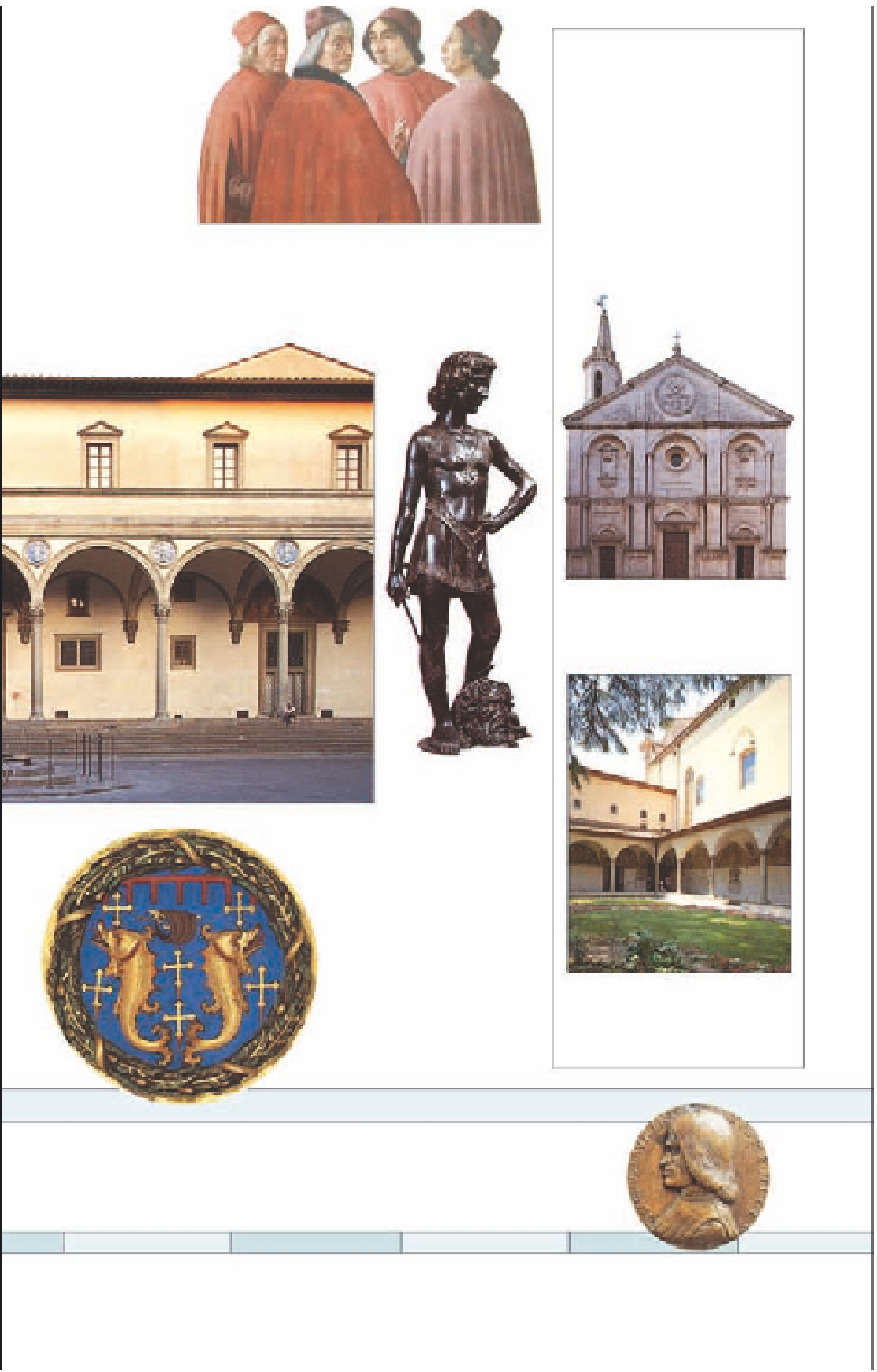Travel Reference
In-Depth Information
WHERE TO
SEE RENAISSANCE
TUSCANY
Most of Florence was rebuilt
during the Renaissance. High-
lights include San Lorenzo
(see pp90-91)
, Masaccio's
frescoes in the Brancacci
Chapel
(pp126-7),
many
paintings in the Uffizi
(pp80-83)
and the sculp-
tures at the Bargello
(pp68-9).
Grey sandstone
and white
plaster contrasts
radically with
the rich surface
ornamentation
of late medieval
architecture.
Humanist Scholars
By studying a broad range of subjects,
from art to politics, the Humanists fostered
the idea of Renaissance man, equally
skilled in many activities.
Classical
Corinthian
capital
Pienza Duomo
(1459)
Pope Pius II's plans for a model
Renaissance city at Pienza
(
p226)
were never fully realized.
David
(1475)
A favourite Floren-
tine subject
(see
p77)
, Verrocchio's
bronze emphasizes
David's youth and
vulnerability.
Pazzi Family Emblem
The wealthy Pazzi were
disgraced after trying to
assassinate Lorenzo the
Magnificent and seize
control of Florence in 1478.
San Marco Cloister
(1437)
Cosimo il Vecchio paid for
Michelozzo's cloister
(pp96-7)
and used it as a retreat.
1454-66
Piero della
Francesca's
The Legend of the
True Cross (see pp200-1)
Lorenzo the
Magnificent
1480
Botticelli's
Primavera
. The villa at
Poggio a Caiano begun
(see p165)
1460
1470
1480
1490
1450
1464
Death of
Cosimo il Vecchio
1478
Pazzi
conspiracy
1492
Death of
Lorenzo the
Magnificent
1485
Botticelli's
The
Birth of Venus
1469
Lorenzo the Magnificent
comes to power










































